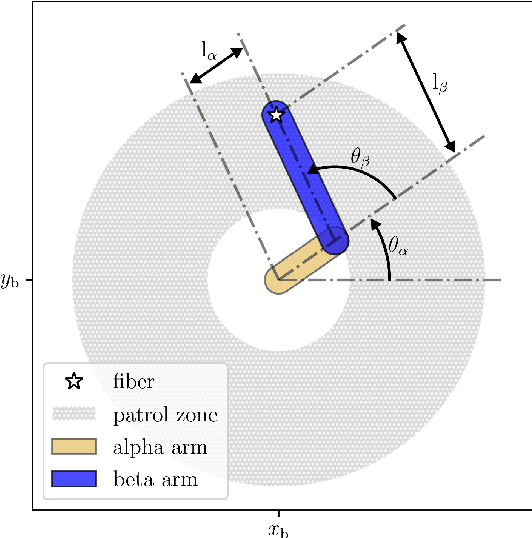Richard W. Pogge
LensNet: Enhancing Real-time Microlensing Event Discovery with Recurrent Neural Networks in the Korea Microlensing Telescope Network
Jan 10, 2025Abstract:Traditional microlensing event vetting methods require highly trained human experts, and the process is both complex and time-consuming. This reliance on manual inspection often leads to inefficiencies and constrains the ability to scale for widespread exoplanet detection, ultimately hindering discovery rates. To address the limits of traditional microlensing event vetting, we have developed LensNet, a machine learning pipeline specifically designed to distinguish legitimate microlensing events from false positives caused by instrumental artifacts, such as pixel bleed trails and diffraction spikes. Our system operates in conjunction with a preliminary algorithm that detects increasing trends in flux. These flagged instances are then passed to LensNet for further classification, allowing for timely alerts and follow-up observations. Tailored for the multi-observatory setup of the Korea Microlensing Telescope Network (KMTNet) and trained on a rich dataset of manually classified events, LensNet is optimized for early detection and warning of microlensing occurrences, enabling astronomers to organize follow-up observations promptly. The internal model of the pipeline employs a multi-branch Recurrent Neural Network (RNN) architecture that evaluates time-series flux data with contextual information, including sky background, the full width at half maximum of the target star, flux errors, PSF quality flags, and air mass for each observation. We demonstrate a classification accuracy above 87.5%, and anticipate further improvements as we expand our training set and continue to refine the algorithm.
SDSS-V Algorithms: Fast, Collision-Free Trajectory Planning for Heavily Overlapping Robotic Fiber Positioners
Dec 08, 2020



Abstract:Robotic fiber positioner (RFP) arrays are becoming heavily adopted in wide field massively multiplexed spectroscopic survey instruments. RFP arrays decrease nightly operational overheads through rapid reconfiguration between fields and exposures. In comparison to similar instruments, SDSS-V has selected a very dense RFP packing scheme where any point in a field is typically accessible to three or more robots. This design provides flexibility in target assignment. However, the task of collision-less trajectory planning is especially challenging. We present two multi-agent distributed control strategies that are highly efficient and computationally inexpensive for determining collision-free paths for RFPs in heavily overlapping workspaces. We demonstrate that a reconfiguration path between two arbitrary robot configurations can be efficiently found if "folded" state, in which all robot arms are retracted and aligned in a lattice-like orientation, is inserted between the initial and final states. Although developed for SDSS-V, the approach we describe is generic and so applicable to a wide range of RFP designs and layouts. Robotic fiber positioner technology continues to advance rapidly, and in the near future ultra-densely packed RFP designs may be feasible. Our algorithms are especially capable in routing paths in very crowded environments, where we see efficient results even in regimes significantly more crowded than the SDSS-V RFP design.
 Add to Chrome
Add to Chrome Add to Firefox
Add to Firefox Add to Edge
Add to Edge